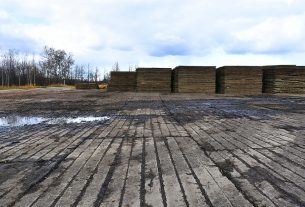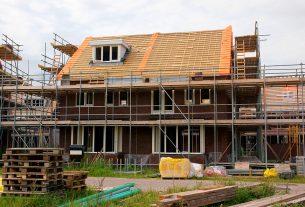In the ever-evolving world of construction and mapping, precision is the key to success. One groundbreaking technology that has been leading the charge in revolutionizing precision is laser scanning survey. In this article, we will explore what laser scanning survey is, how it works, and its impact on construction and mapping industries. Let’s dive in!
What is laser scanning survey?
Laser scanning survey, often referred to as LiDAR (Light Detection and Ranging), is a cutting-edge technology used to capture highly accurate 3D representations of physical environments. It involves the use of laser beams emitted from a device to measure distances and create detailed point clouds of surfaces, objects, and landscapes. These point clouds can then be used to generate precise maps, models, and measurements.
Importance of precision in construction and mapping
Precision plays a critical role in construction and mapping. Inaccurate data can lead to costly errors, delays, and safety hazards. Laser scanning survey offers a solution by providing an unprecedented level of accuracy, making it an indispensable tool for professionals in these industries.
How Laser Scanning Works
To understand the impact of laser scanning survey, it’s essential to grasp the underlying technology and process.
Laser scanning devices emit laser pulses that bounce off surfaces and return to the scanner. By measuring the time it takes for the laser to travel to the object and back, the device calculates the distance with remarkable precision. These distance measurements are collected in millions of points, creating a point cloud, which serves as the foundation for 3D models and maps.
LiDAR technology is a crucial component of laser scanning. It enhances accuracy by using laser beams and sensors to capture data from multiple angles, ensuring comprehensive coverage and eliminating blind spots.
Applications in Construction
Benefits of laser scanning for construction projects
Laser scanning survey has become an invaluable asset in the construction industry. Its ability to provide highly accurate as-built documentation of existing structures and landscapes streamlines project planning and execution. Engineers and architects can make informed decisions based on real-world data, reducing design errors and change orders.
Case studies highlighting successful applications
Real-world examples showcase the remarkable impact of laser scanning in construction. Projects like the restoration of historic buildings, the construction of complex infrastructure, and the development of sustainable urban environments have all benefited from the precision and efficiency offered by laser scanning survey.
Enhancing Mapping Accuracy
The accuracy of mapping is fundamental for a wide range of applications, from environmental monitoring to urban planning. Laser scanning survey has raised the bar in this regard.
By capturing intricate details of landscapes, structures, and natural features, laser scanning delivers maps that are far more precise than those produced by traditional surveying methods. This level of accuracy is vital for creating reliable GIS (Geographic Information System) data and aiding in disaster management, resource planning, and land development.
Real-time Data Collection
Discussing the efficiency of real-time data acquisition
One of the significant advantages of laser scanning survey is its ability to collect data in real time. This feature is particularly valuable in applications such as autonomous vehicles, forestry management, and environmental monitoring. Real-time data allows for rapid decision-making and adjustments, enhancing efficiency and safety.
Examples of industries benefiting from this feature
Industries like agriculture, where precision is crucial for optimizing crop yield, have harnessed real-time laser scanning data to automate farming processes. Additionally, disaster response teams rely on immediate access to accurate maps and terrain data, which laser scanning survey can provide in emergency situations.
Safety and Cost-Efficiency
How laser scanning enhances safety on construction sites
Safety is paramount in construction, and laser scanning survey contributes significantly to reducing risks. By providing comprehensive data on the existing environment, it helps project managers identify potential hazards and plan accordingly. This proactive approach minimizes accidents and associated costs.
Cost-saving aspects of precision mapping
Precision mapping with laser scanning survey not only saves time but also reduces expenses. Accurate data leads to more efficient resource allocation, minimizing the need for costly revisions and adjustments during construction or mapping projects. In the long run, this translates into substantial cost savings.
Future Trends
Emerging technologies in laser scanning survey
The field of laser scanning is continually evolving. Emerging technologies, such as mobile LiDAR systems and miniaturized scanners, are making laser scanning more accessible and versatile than ever before. These innovations are opening up new possibilities for precision in various industries.
Predictions for the future of precision in construction and mapping
As laser scanning survey continues to advance, we can expect even higher levels of precision and efficiency. Future applications may include augmented reality navigation, advanced environmental monitoring, and enhanced urban planning. The technology is poised to transform how we interact with our physical world.
Conclusion
In a world where precision is the cornerstone of success, laser scanning survey has emerged as a game-changer for construction and mapping. Its ability to provide highly accurate data in real time, enhance safety, and reduce costs is transforming industries across the board. As technology continues to evolve, the future of precision in construction and mapping looks brighter than ever.



